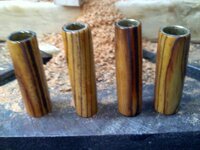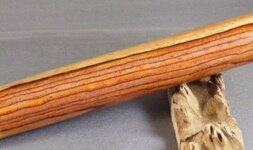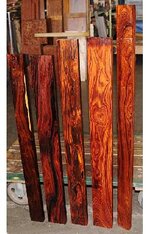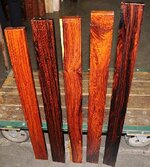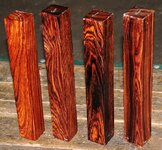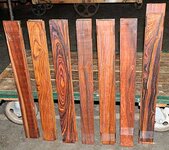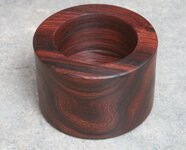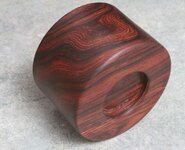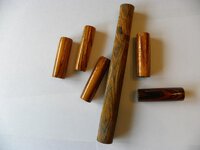

Sorry, but I have a large amount of Cocobolo and have never had any that light or with that grain pattern. Mine range from reds to browns to almost black with an uneven grain pattern. If you incounter any sapwood, it usualy is pure white and adds contrast to your piece. I have made handles for antique tool replacement for many years and have never noticed any turning lighter or darker. I also have Stanley hand planes over a hundred years old that I have restored the handles using Murphy's Oil Soap and 0000 Steel Wool. They come back just like new without destroying the patina . I once ordered 10 blanks of rare "mottled red cedar" from the internet. The photo posted showed beautiful figured wood. When it arrived it was 10 pieces of pure white cedar. No grain, no figure, And no red mottleing at a cost of $30. I never could get a reply from this jerk, and just wrote it off as a learning lesson. You may not always get what you paid for. Now that I said all that, here is what Cocobolo should look like according to my Encyclopedia of wood.
"When freshly cut, the heartwood is an array of colors from lemon-orange to deep rich red, with variegated streaks and zones of yellow, orange, and brick red.These mature to a deep, mellow orange-red, with darker stripes and mottling. The sapwood, clearly defined from the heartwood, is almost white in color.The grain varies from straight to irregular and is sometimes wavy. It has a fine, medium, uniform texture". Dalbergia retusa, also known as granadillo, or Cocobolo comes from the Leguminosae family. It is a hardwood that grows along the Pacific seaboard of Central America from Mexico to Panama.
Jim S

